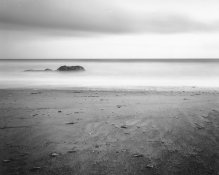mealers
Member
Is there an actual technique for printing detail in the sky but also retaining exposure on the foreground?
I've developed a couple negatives which have good separation in the clouds but as soon as I try and print I have to drastically overexpose the foreground to get get any signs of cloud detail.
As both negatives are simple beach scenes I figured it would be easy enough to expose the clouds to the correct exposure and then dodge in the foreground.
Is this the right way of doing it or am I way off track??
Any help would be appreciated.
Mike
I've developed a couple negatives which have good separation in the clouds but as soon as I try and print I have to drastically overexpose the foreground to get get any signs of cloud detail.
As both negatives are simple beach scenes I figured it would be easy enough to expose the clouds to the correct exposure and then dodge in the foreground.
Is this the right way of doing it or am I way off track??
Any help would be appreciated.
Mike












